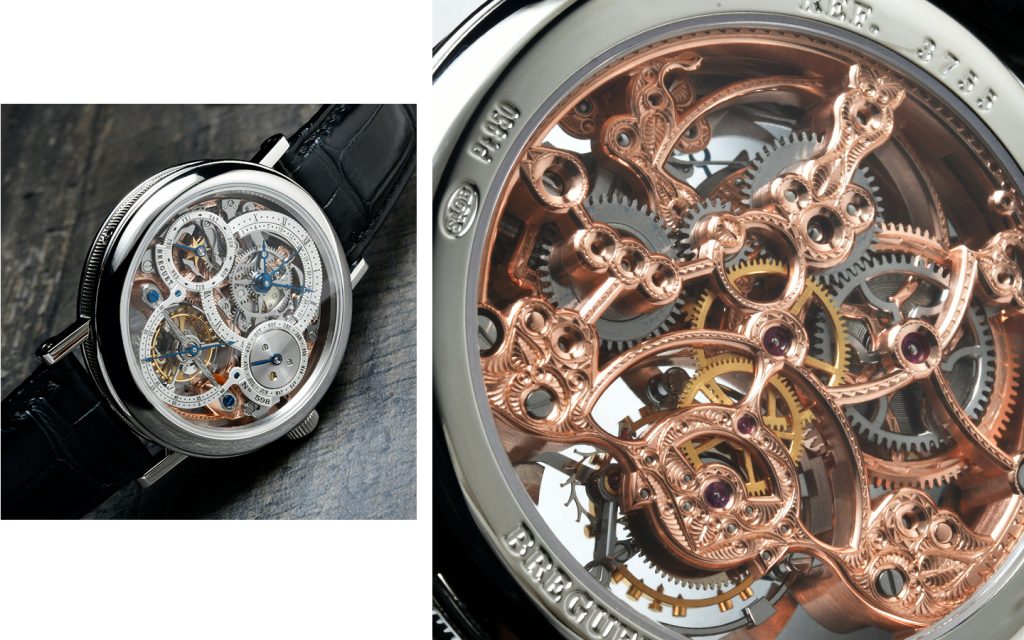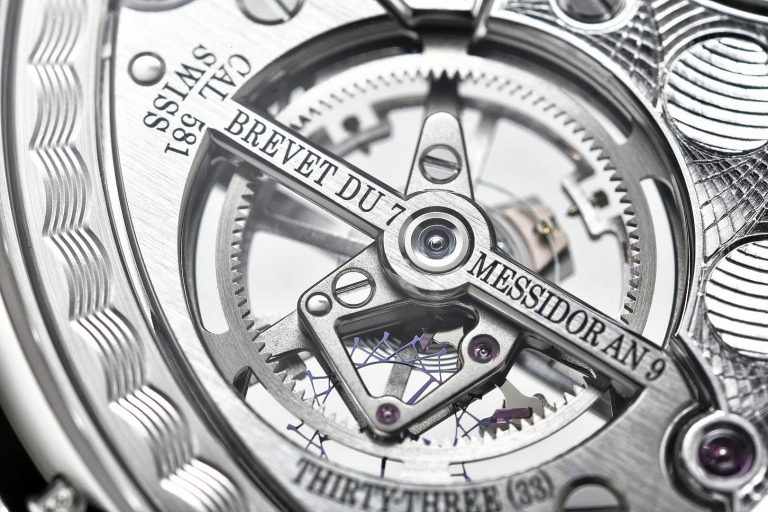Abraham Louis Breguet is most famously known as the inventor of the tourbillon and he was, after a tireless 10 year period of development, granted a patent for its invention on the 26th of June 1801, or 218 years ago today.
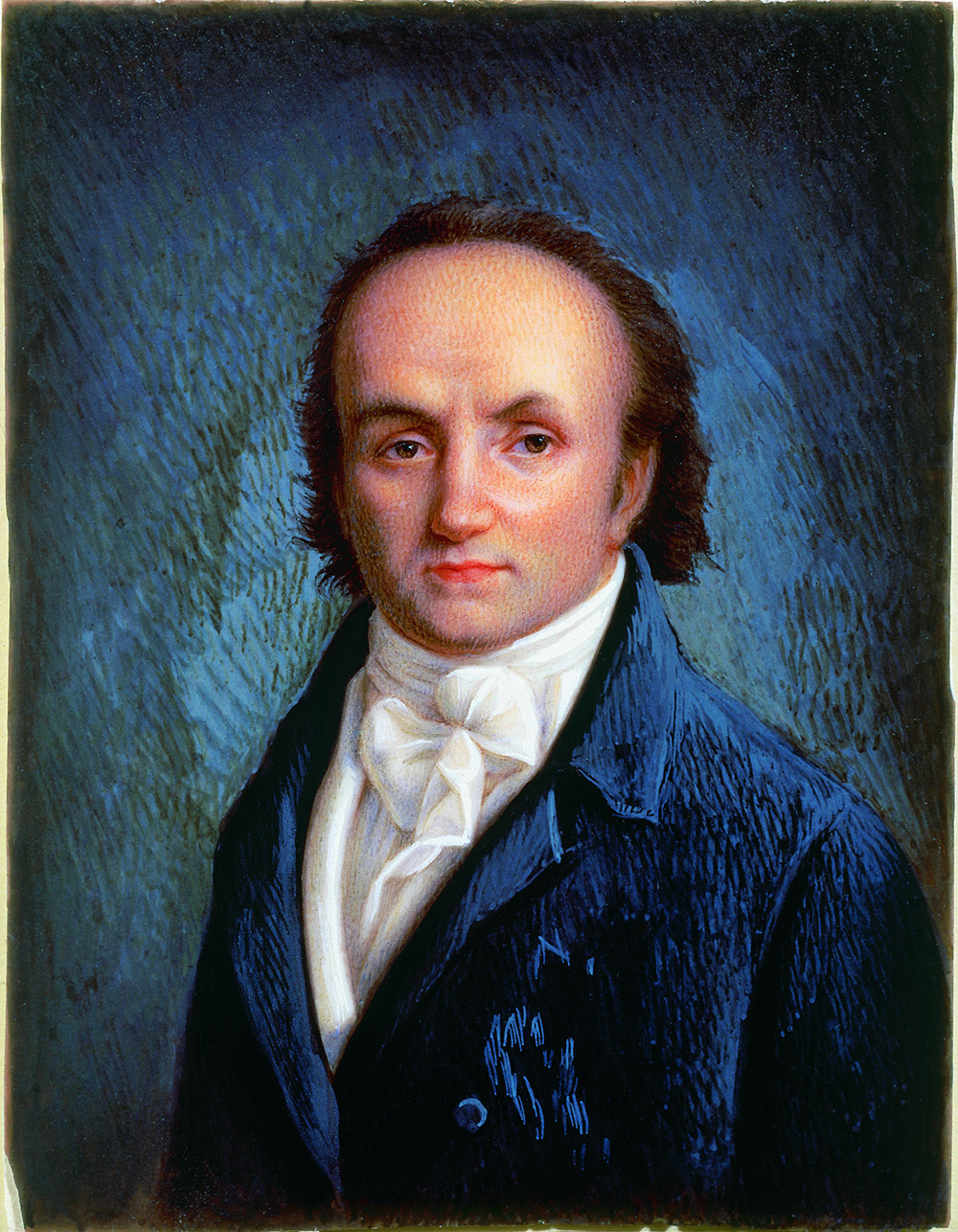
His motivation was simple- to improve the accuracy of his pocket watches by compensating against the effects of gravity on the hairspring. Given that pocket watches spent most of the time in an upright position in their owner’s pocket, the goal of the tourbillon was to eliminate rate errors by having the hairspring turn on itself continually, cancelling out the effects of gravity.
THE THEORY OF THE TOURBILLON

“By means of this invention, I have succeeded in cancelling out by compensation the anomalies due to the different positions of the centres of gravity of the Regulator movement”
- A.-L. Breguet
This was done by fixing the fourth wheel of the gear train, then using the power from the mainspring to drive a cage containing the hairspring around this fixed fourth wheel. The invention was named “tourbillon” or French for “whirlwind”, a name that perfectly suits the visual effect of the mechanism as it is seen working.
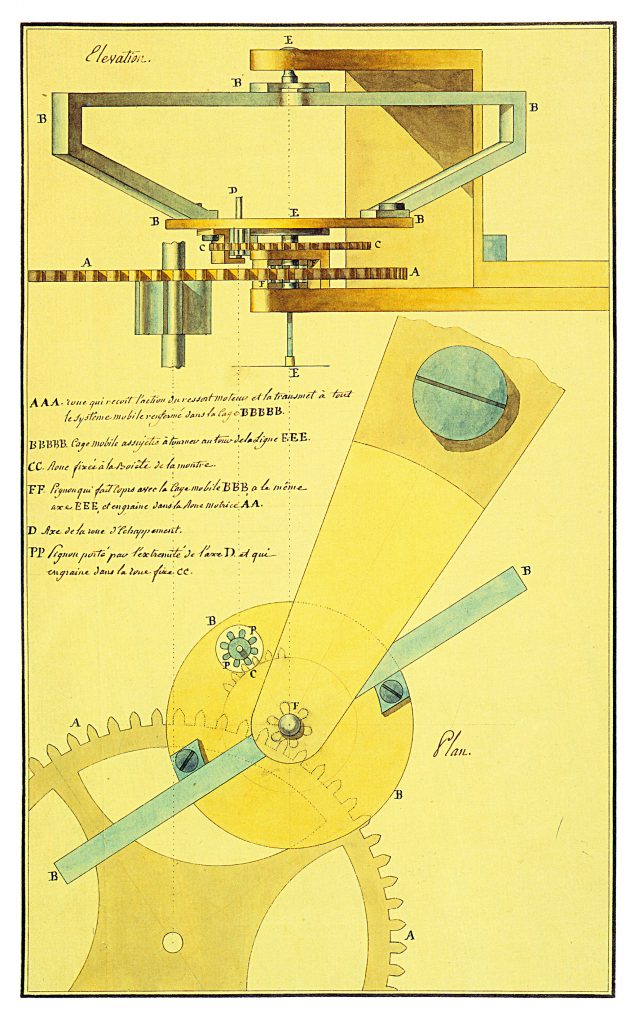
That of course begs the question that we have today, and is something that you might be curious about if you’ve spent time with Breguet Tourbillon watches. It is a detail that is often seen but rarely thought about, and usually glossed over in the appreciation of the visual splendour of a Tourbillon that is the highlight of the watch that it is seen on.
Look at the pictures of various Breguet Tourbillon watches below, and spot the words “Brevet Du 7 Messidor An 9” on the movements shown.
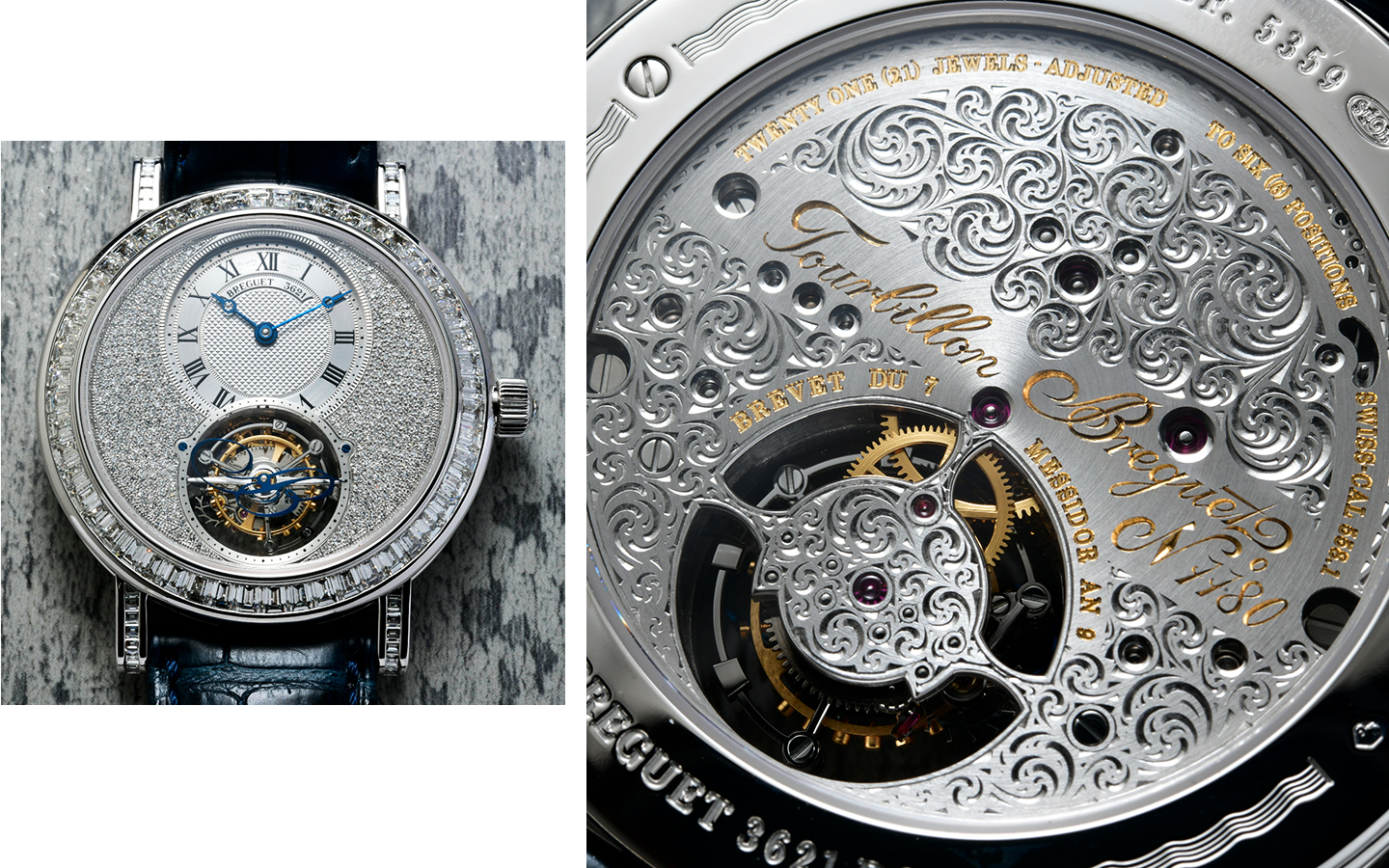
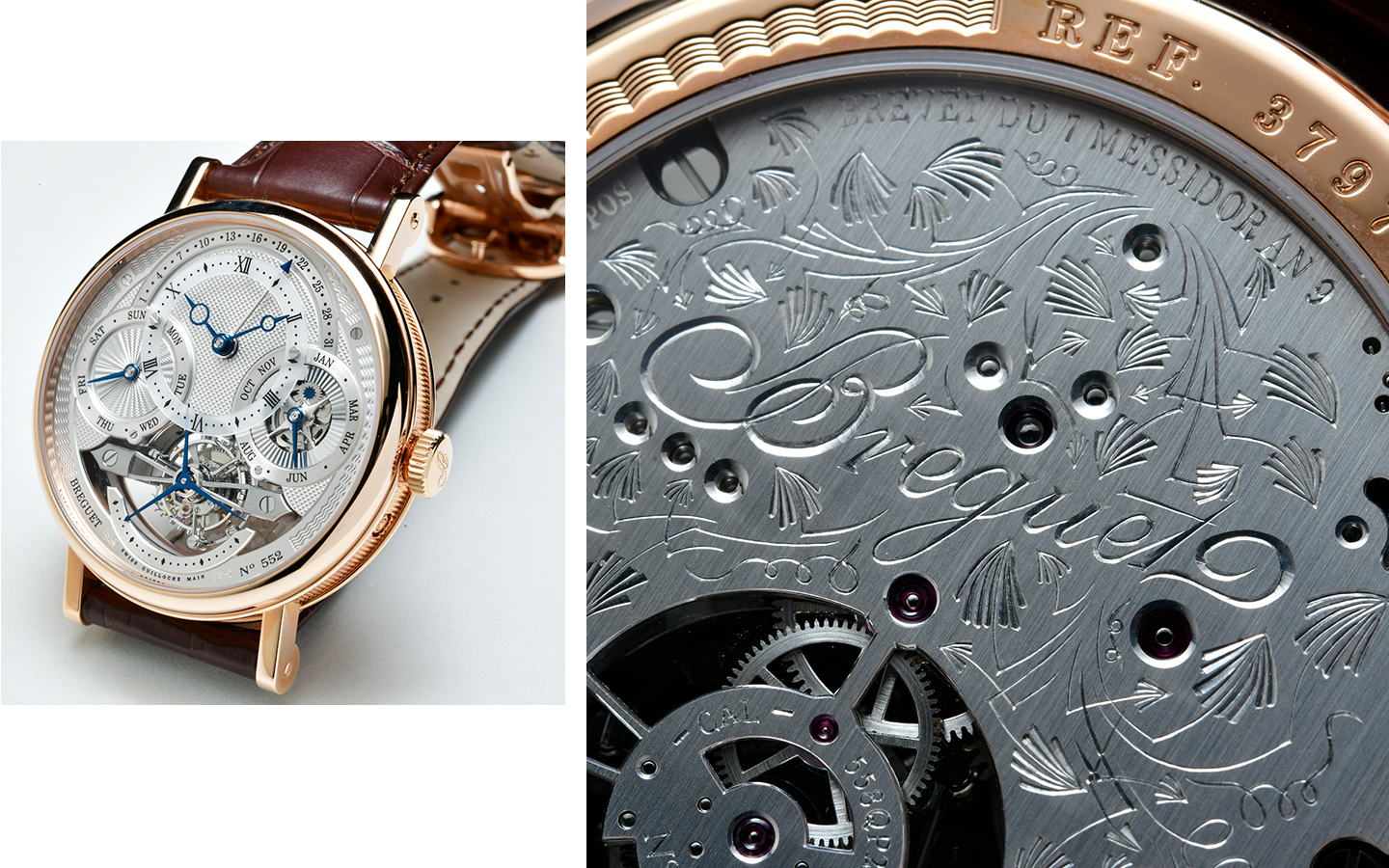
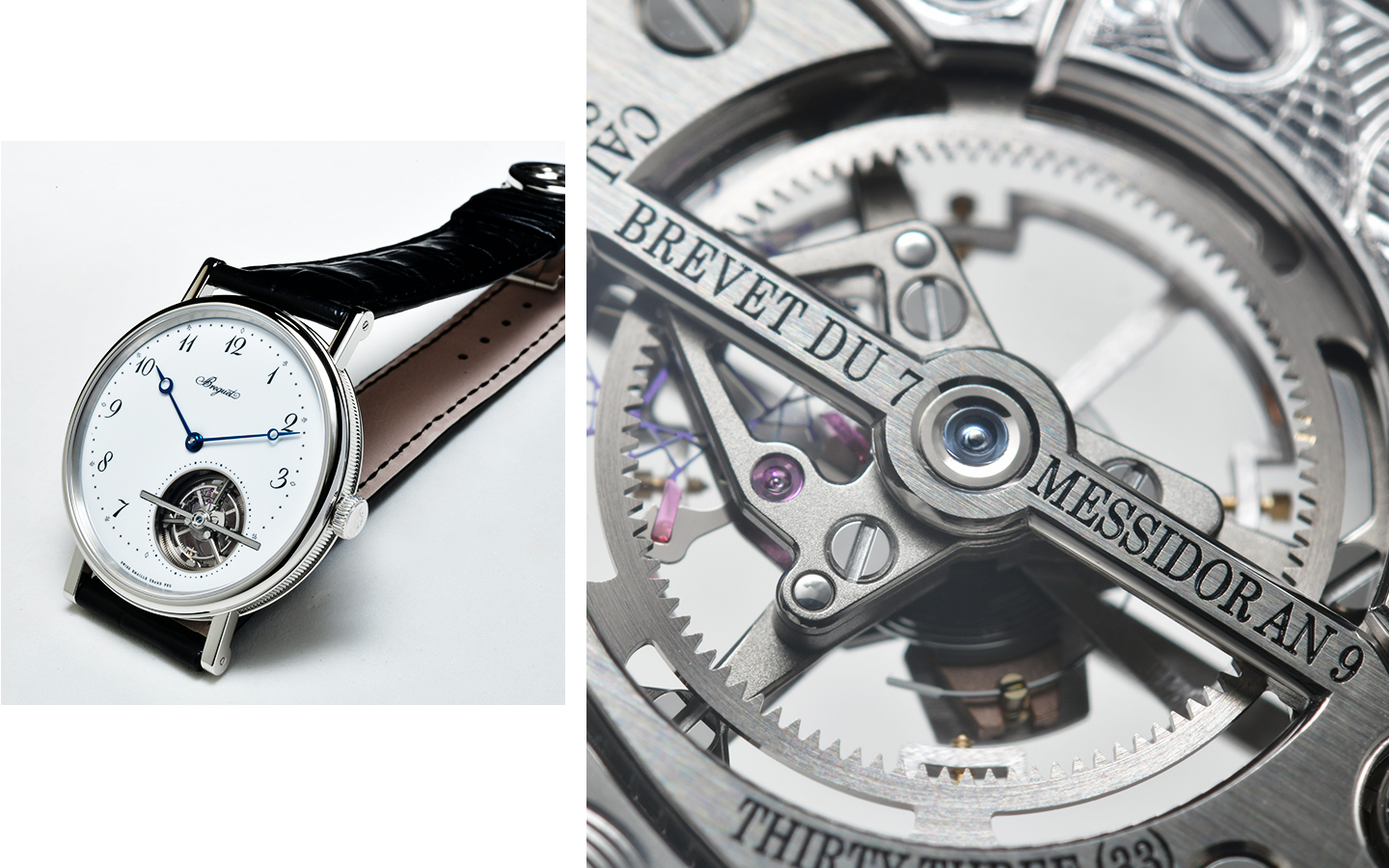
What do the words “Brevet Du 7 Messidor An 9” on the movements shown above mean? Oftentimes it appears on or near the tourbillon bridge, and sometimes on other parts of the movement. It is obvious that while some knowledge of French might help matters to understand it, some additional knowledge of French history is needed to solve the question completely.
“Brevet” is a word that some might recognise in the context of horological history, appearing under the Rolex logo of early crowns of Rolex Oyster watches. The word means “Patent” in English and refers to the Tourbillon patent granted to Abraham Louis Breguet.
But what about the rest of it – “7 Messidor An 9”?
Well, this is looks most obviously to be a date, but none that anyone can recognise unless one is familiar with the time period around when the tourbillon was invented. The French Revolution had occurred in 1789, and the republic was established on 1792, only nine years prior to when Breguet had received this Tourbillon patent in 1801. As part of a wider range of reforms, a new calendar was created with one of the aims being for the new revolutionary government to distance itself from the previous royalist regime.
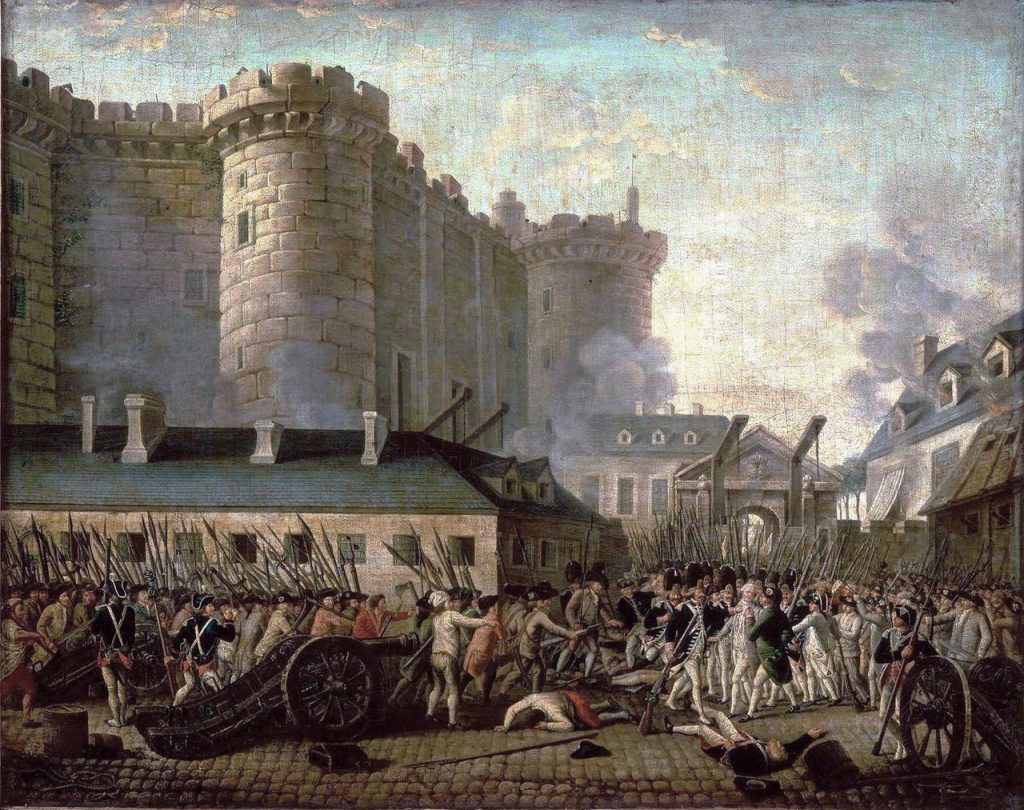
It was called the French Republican calendar, and because it was based on a decimal system, each day was divided into ten hours, each hour into 100 decimal minutes, and each minute into 100 seconds. Also, each month was 30 days, divided into three ten-day weeks. The remaining five days of the year (six in leap years) were treated as national holidays.
Going that bit further, this new calendar was given new names for the 12 months, which were devised by the poet and playwright Fabre d’Églantine. Starting in the autumn, the new months were:
[ninja_tables id=”1985″]
From this list, we see that “Messidor” is the 10th month after the start, under the Gregorian calendar, in September, or the day that the autumnal equinox occurred in Paris, which works out neatly to be June. Next “An 9”, means “Year 9” or the ninth year after 1793, which we see, neatly works out to be 1801.
In summary then, the date “7 Messidor An 9” works out to be the 26th June 1801, which is precisely when the patent or “Brevet” was granted to Breguet for the invention of the Tourbillon.
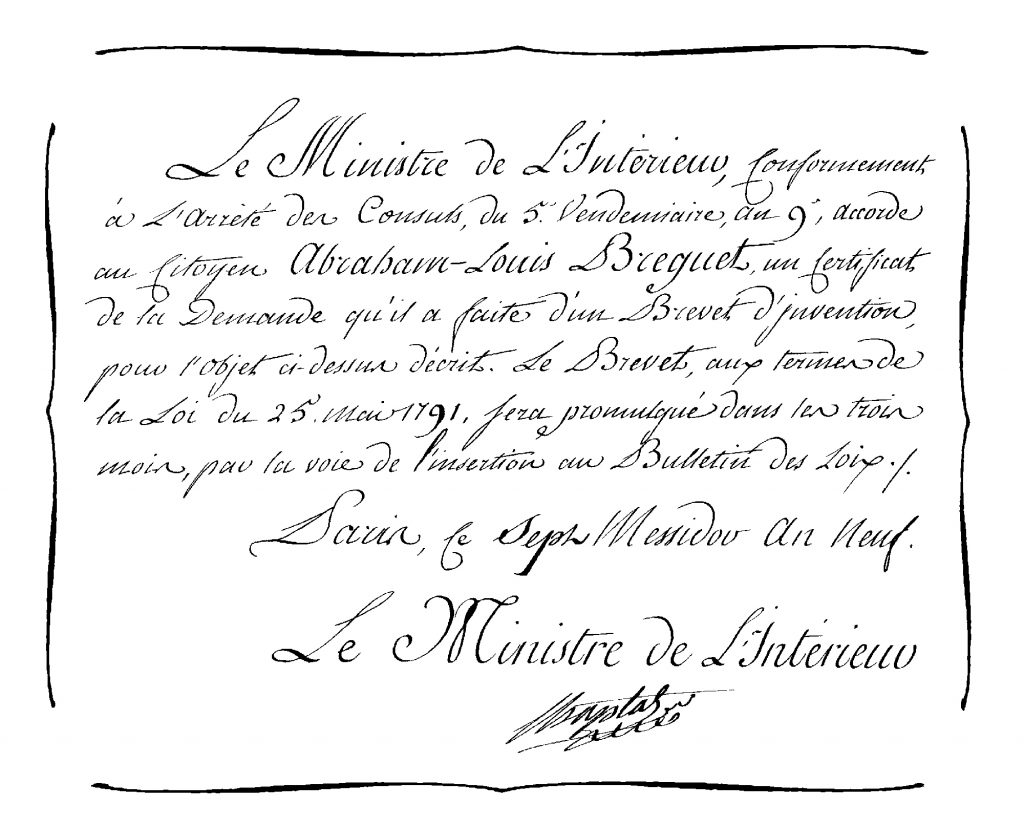
Want to be sure? You can check it here at this website which converts dates from the Gregorian to the Republic Calendar. Here is the result for the 26th of June 1801, the date of the patent for Breguet’s Tourbillon, which works out to 7 Messidor IX.

The French Republican calendar was abolished in 1806 a year after Napoleon I came to power, which is why we no longer see this in use today. As a quirk of history, it is fascinating that it existed. Equally, considering how confusing it was, it is also easy to see why it was abolished after such a short time. See here for a fascinating list of criticisms and shortcomings of the French Republican Calendar.
Today we see it on Breguet Tourbillon watches, as a remembrance of this fact, and also in acknowledging that government records, like patents, were recorded with this calendar.
In any case, whether the words“Brevet Du 7 Messidor An 9” appear on the tourbillon bridge, on the movement, or not at all (see below), it is a nice reminder of a specific detail in the time of the tourbillon’s invention, and one that also recognises the true originator of a complication that we enjoy today. Remember, Breguet invented the Tourbillon and he got a patent to prove it! – Now you know.
